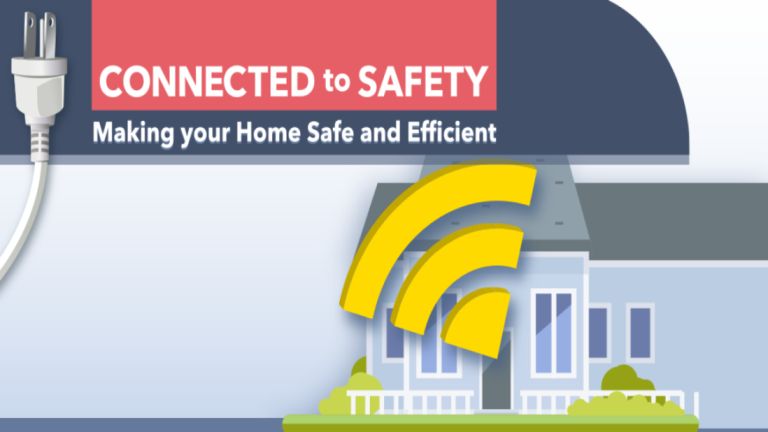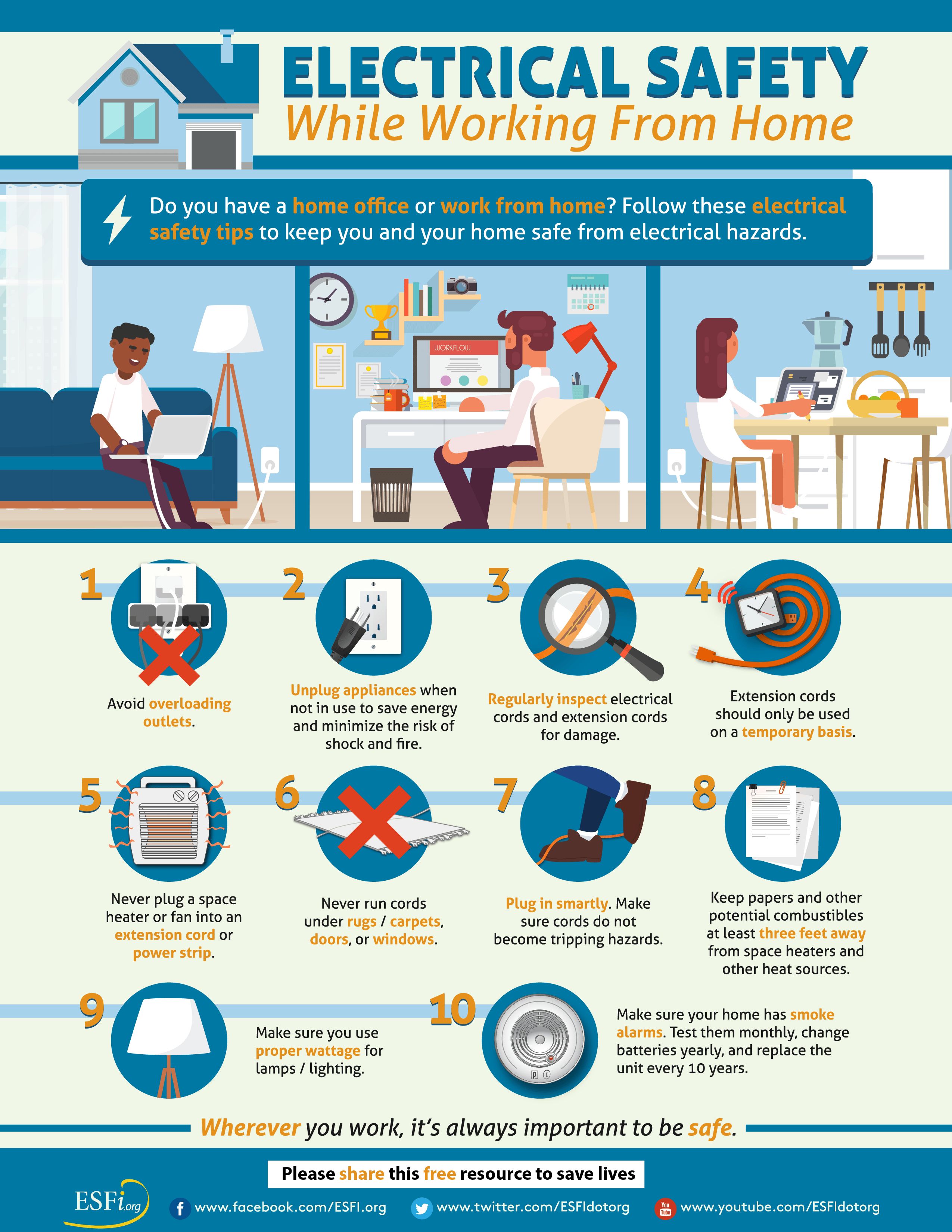Electricity is the invisible powerhouse that makes anything possible in our modern homes, from entertainment to meal preparation. Yet, with this convenience comes responsibility. Proper electrical safety practices are essential shields against accidents that could harm you, your family, and your property. The good news is that creating a safer electrical environment doesn’t require a handyman’s expertise—just awareness and proactive measures.
In this guide, we’ll explore the fundamentals of electrical safety that every homeowner should know. Whether you’re a new homeowner or have lived in your space for decades, understanding these principles is crucial. With the right knowledge, you can maintain a safe environment in your home. Let’s dive into the essentials that will help you prevent electrical hazards and respond effectively if issues arise.

- Understanding the common electrical hazards present in homes today. Source: @ESFIdotorg – esfi.org
Understanding Common Electrical Hazards
One of the most overlooked aspects of home safety is the proper installation and maintenance of Ground Fault Interrupters (GFIs). These specialized outlets are designed to quickly shut off power when they detect an imbalance in the electrical current, making them essential in moisture-prone areas like kitchens, bathrooms, and outdoor spaces. Without GFIs, even minor water exposure can create dangerous situations. A common mistake many homeowners make is replacing these specialized outlets with standard ones during renovations, unknowingly removing a critical safety feature that allows safe electrical usage.
Exposed wiring presents another significant hazard that any homeowner should address immediately. Frayed power cords, damaged wall outlets, and wiring outside of junction boxes are all potential fire hazards and shock risks. Older homes are particularly vulnerable to electrical issues due to outdated wiring systems that weren’t designed to handle modern appliance loads. Knob and tube wiring or aluminum wiring found in older construction may need professional assessment, as these systems often lack the safety features and capacity that current electrical codes require. Regular inspection of visible wiring and prompt repair of any damage is essential for maintaining a safe electrical system.

- Everyday safety practices for managing electrical outlets and appliances effectively. Source: @ESFIdotorg – esfi.org
Essential Safety Practices for Everyday Use
Proper usage of outlets is fundamental to electrical safety in any home. Many homeowners overload circuits by plugging too many high-powered devices into a single outlet or power strip, creating fire hazards. To ensure safe electrical usage, know your home’s electrical capacity and distribute power-hungry appliances across different circuits. If you’re frequently resetting breakers, this is a clear sign that you’re exceeding what your system can safely handle. A professional handyman can help assess your electrical load and suggest solutions that might include adding circuits to accommodate your needs.
Extension cords represent another area where safety practices are often overlooked. These should always be viewed as temporary solutions, not permanent fixtures in your home. Using extension cords as anything more than a short-term fix can lead to overheating, tripping hazards, and potential fire risks. When selecting extension cords, choose those rated for your specific application—indoor or outdoor, and with appropriate amperage ratings. Never run cords under carpets or furniture where heat cannot dissipate, and inspect them regularly for damage. If you find yourself constantly relying on extension cords, consider having a qualified handyman install additional outlets where you need them most.

- Preparedness tips for responding to and maintaining electrical emergencies safely. Source: @ESFIdotorg – esfi.org
Emergency Response and Maintenance
Knowing how to respond quickly during an electrical emergency is a skill that makes handling unexpected situations manageable. The first step in any electrical emergency is locating your home’s circuit breaker panel and understanding how to shut off power—either to a specific area or the entire house. Take time to properly label each breaker, identifying which rooms or appliances it controls. This preparation ensures that during an emergency, you won’t waste precious minutes trying to figure out which switch to flip. A professional handyman can help properly label your panel if you’re unsure about which breaker controls what area of your home.
Regular maintenance is your best defense against electrical emergencies. Establish a schedule for inspecting your home’s electrical system, looking for warning signs like flickering lights, warm outlets, or frequently tripping breakers. These symptoms often indicate underlying issues that require attention. While some maintenance tasks are suitable for DIY, recognize when to call professionals—particularly for issues involving the main electrical panel, persistent problems, or when you’re unsure about the cause. A qualified handyman or licensed electrician can carry out thorough inspections, ensuring your system remains up to code and functioning safely. Remember that electrical codes evolve, and updating your system periodically is an investment in your home’s safety and value.
